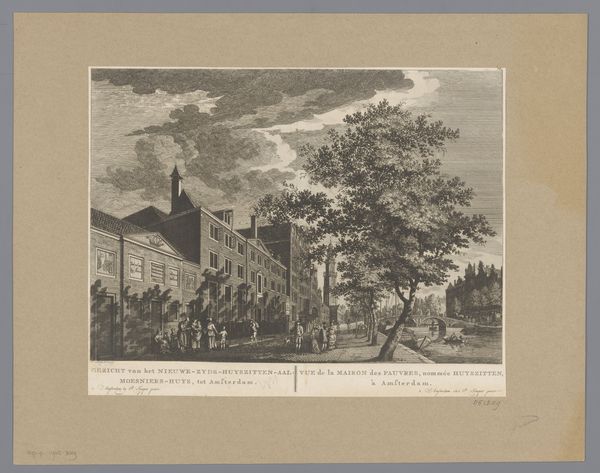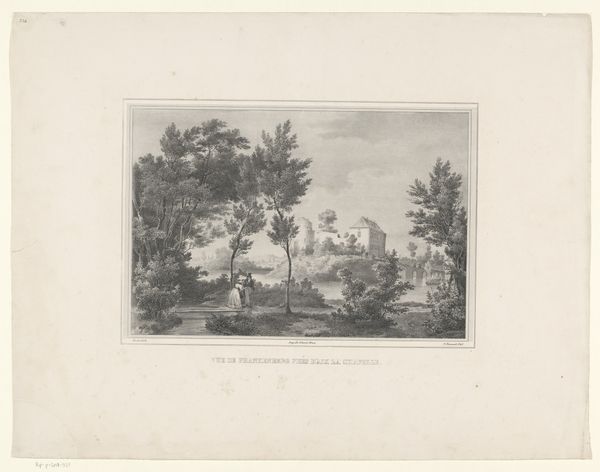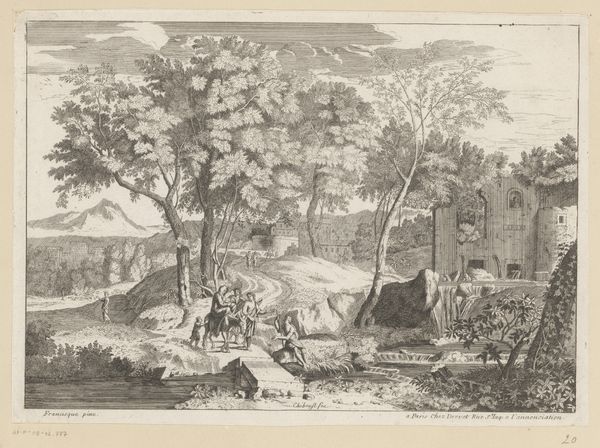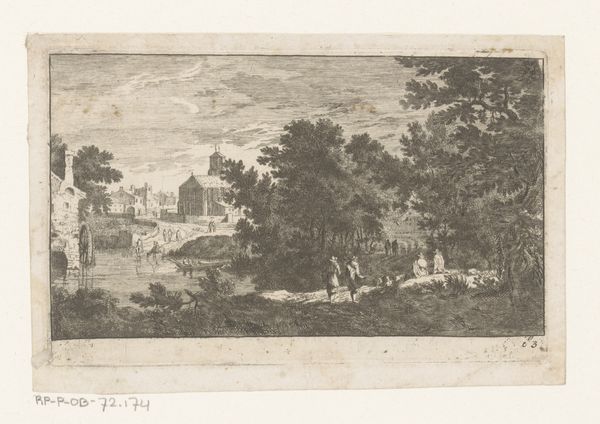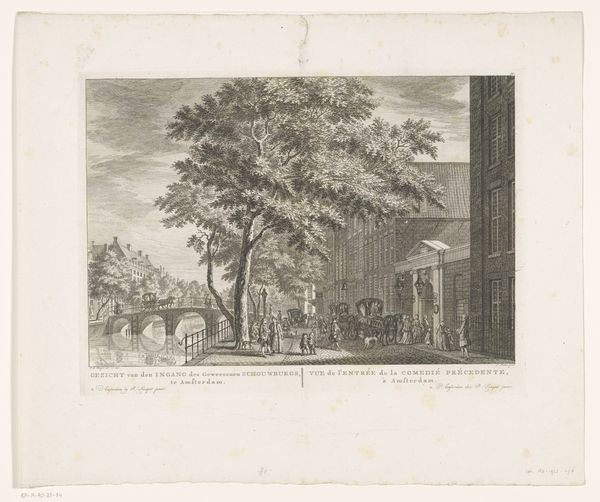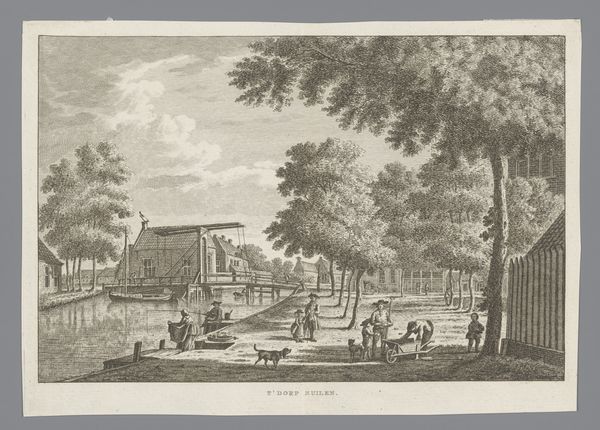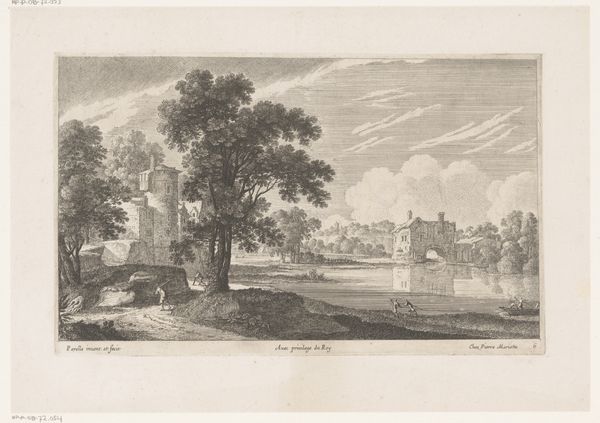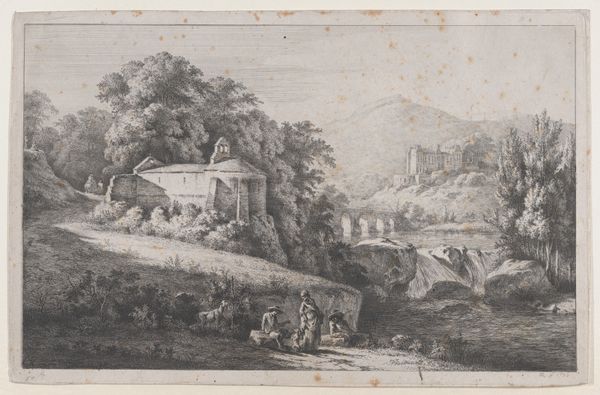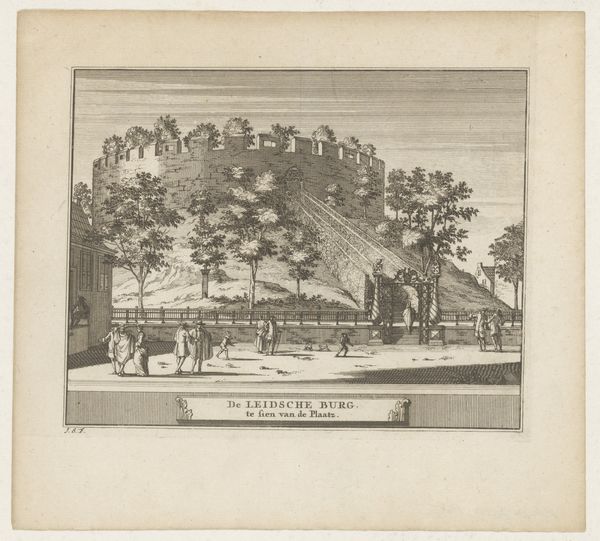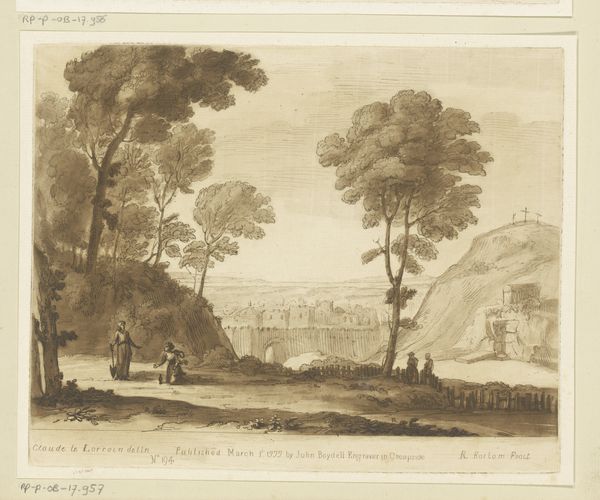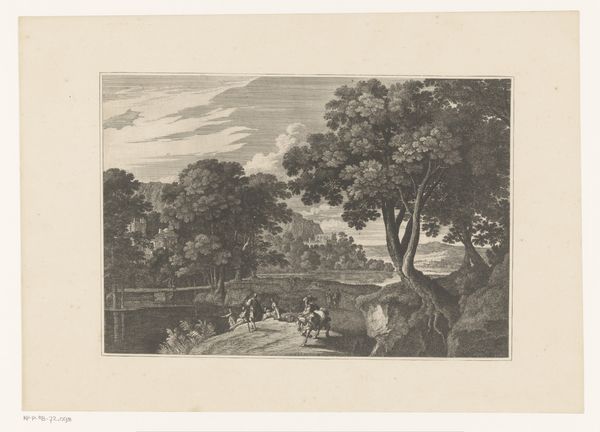
drawing, etching, paper, engraving
#
drawing
#
neoclacissism
#
etching
#
landscape
#
paper
#
cityscape
#
engraving
Dimensions: height 276 mm, width 354 mm
Copyright: Rijks Museum: Open Domain
Curator: Ah, this etching, "Gezicht op de Amstelkerk te Amsterdam" – "View of the Amstel Church in Amsterdam" created in 1805. The hand of Hermanus Petrus Schouten brought this to life, capturing a moment in time. Editor: My eye is immediately drawn to the crisp, almost clinical detail of the architecture, balanced with that bustle of daily life. I love how the church recedes, a serene backdrop to the ordinary, bustling street. Curator: There is a calm dignity despite its neoclassical elements—its architectural form stands distant. It gives me the impression that faith has taken refuge inward—it offers me space for imagination and quiet reflection. I imagine I'm right there by the canals... Editor: Speaking of daily life, look at the paper itself; etching and engraving were accessible techniques, feeding the rising demand for affordable cityscapes. It reflects a specific cultural moment – the emergence of the middle class who desired to display images of their environment within their homes. Curator: The detail! The way the light filters through the trees—makes the houses appear as if they breathe; they give an idea of how old buildings talk. In their silence, they give the people below a sort of history to walk upon—perhaps their own. Editor: Exactly! This wasn't some singular masterwork displayed in a palace, it was a reproducible item intended for wider consumption. Even the scale is relevant. Made from readily available paper and ink; these etchings are of an average scale for circulation of commodity production. It gives one space for reflection... on the power of material availability and how we see. Curator: There is a peaceful tension between seeing and walking through the city today. It inspires a dream of going back in time to meet them where they walk and play along the river—what conversations did they share then? Editor: I agree—the availability of reproduced artworks then versus today—are also reflections that help illuminate history—its cultural consumption by way of images—made possible due to materials readily available, even now. Curator: Seeing our history in small form provides big ideas.
Comments
No comments
Be the first to comment and join the conversation on the ultimate creative platform.
